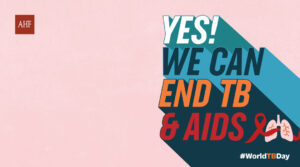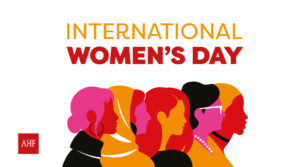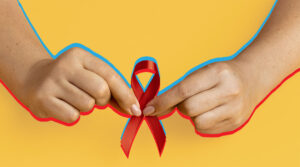New HIV cases are on the rise “in an alarming number of countries, regions and cities around the world,” said the Joint United Nations Program on HIV/AIDS (UNAIDS).
In 2021, a total of 1.5 million new HIV infections were registered, that is, one million more than the goal of 500,000 cases set by the international organization, which aims to end AIDS as a public health threat by 2030.
Against this background, and in order to support the 28 countries with the highest rates of new infections, UNAIDS called for an urgent meeting with delegates from those nations and prevention experts.
The objectives of the meeting were to analyze why a decrease in new infections is not being achieved, discuss possible solutions and help the countries involved to establish more ambitious prevention goals, the program reported in a press release.
New roadmap
The 28 countries called to the meeting are part of the Global Coalition for HIV Prevention, created in 2017 “to encourage commitment, momentum, investment and responsibility” between governments, civil society and donors, in order to implement high-quality, equitable, large-scale preventive programs.
Among the member countries are two Latin American: Brazil and Mexico. But there are also some Europeans, such as France, Germany, the Netherlands, Norway, Ukraine and Sweden. The rest of the nations belongs to Africa and Asia.
It should be remembered that UNAIDS will work on its objectives to reduce the HIV pandemic following a roadmap entitled HIV Prevention by 2025, launched last July and where the organization sets specific goals for each country to pursue according to its particular situation.
Reaffirming objectives
According to what was reported by UNAIDS, the meeting “comes at a critical moment”, since the most recent report on the pandemic had already warned about a reduction of only 3.6% in new infections between 2020 and 2021, which is the decline lowest annual rate on record since 2016.
The same report, titled At Risk, revealed that during 2021, every two minutes an adolescent girl or young woman contracted HIV, and that there were a total of 250,000 new HIV infections among adolescent girls and young women (15-24 years of age).
The vast majority of these new cases (80%) were in sub-Saharan Africa, where adolescent girls and young women are three times more likely to be infected with HIV than men of the same age.
On the other hand, groups such as men who have sex with men, people who inject drugs, commercial sex workers, transgender people and people in prison accounted for 70% of new HIV infections in 2021 around the world.
These data emphasize the need for prevention efforts to focus on the most marginalized and vulnerable groups if success in slowing transmission of the virus is to be achieved.
The goal to be achieved by 2025 is to reduce new annual HIV infections to 370,000.
Actions, not words
“This is not about simply implementing this roadmap,” said Eamonn Murphy, Acting Deputy Executive Director for Programs at UNAIDS. “We have to be honest: if we want to reduce new HIV infections, we need more political leadership, more investment and stronger commitment to be able to reach key populations.”
Thus, the roadmap to prevent HIV sets new goals, including offering comprehensive packages of prevention services and ensuring that these are available and used by 95% of people at risk of HIV infection.
At AHF Latin America and the Caribbean we are clear that prevention services must reach the most vulnerable populations, therefore, we work every day to offer these services with quality and within the reach of all people. If you want to take a free HIV test or you already have a diagnosis and want guidance to access treatment, come to our centers, we are in 11 countries in the region.






